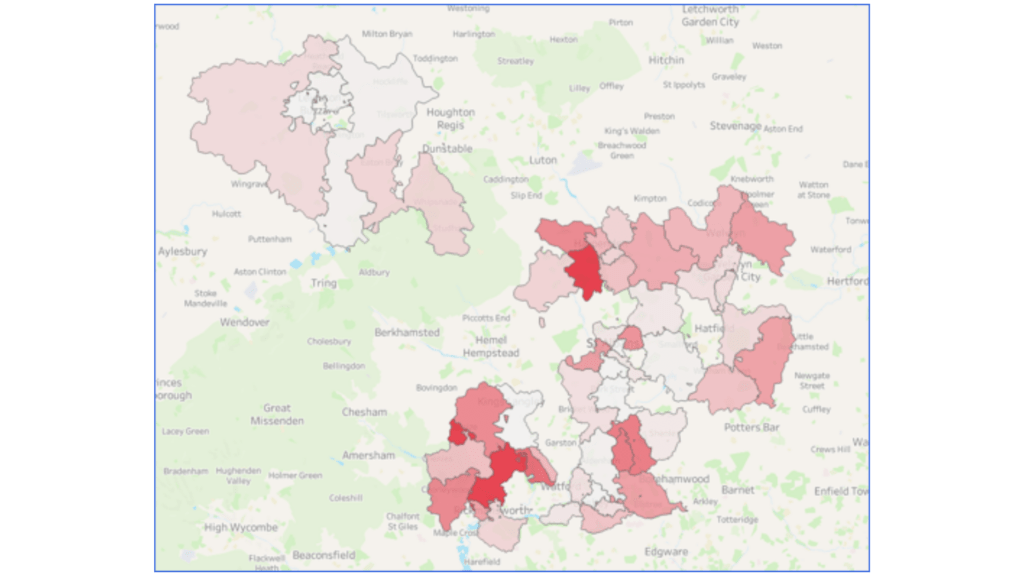A Combinatory Approach to Audience Marketing
KINESSO blends person-based and geo-based data to help marketers reach the right people in the right places at the right time, making campaigns more effective.
Authored by Geoff Copps | 27th March 2025The Best of Both Worlds
At KINESSO we’re proud of the market-leading audience discovery, insight and addressability that we deliver for our clients.
Backed by Acxiom, we manage deep datasets that enable us to access unrivalled intelligence about consumers – and to put that intelligence to work to boost marketing campaign success.
More recently we’ve been working on an approach that combines our rich ‘person-based’ data assets with a powerful ‘geo-based’ data layer. The result is a combinatory solution that can deliver the best of both worlds.
Our solution achieves this feat in two main areas. The first area is designing relevant audiences for our clients. The second is mobilising those audiences across media platforms.
Here we shall focus on the first – with the latter to follow in a subsequent post…
Why ‘Person-Based’?
The person-level data assets at our disposal allow us to understand at a granular level the attitudes and behaviours of population groups. By grounding our marketing activities in real-world individuals, we can find in a population the most relevant and audience groups for our clients based on deterministic and propensity data.
Why ‘Geo-Based’?
‘Geo-based’ marketing strategies have enjoyed a lot of attention over recent years. The value they can provide has been appraised in the light of regulatory change, ad tech developments, platform siloing, and real-world outcomes.
But the idea that spatial distinctions can be used to parse and understand audiences in a population has a much longer history.
The idea received its first systematic expression in the late nineteenth century. In the 1880s, the Victorian social reformer Charles James Booth assigned a team of researchers to visit streets across the capital. To each household or area he assigned a letter between A and H, based largely on his team’s visual assessment of its level of poverty or affluence. The resultant schema offered a new picture of London.
Later, in the 1970s, demographers adapted this idea to develop consumer classifications. Their value as a marketing tool was quickly realised. Examples of such geodemographic segmentations include Acxiom’s Personicx, TransUnion’s CAMEO, Experian’s MOSAIC, and CACI’s Acorn. Test their descriptive power for yourself by inputting any UK postcode here: https://www.personicx.co.uk/my-segment.html
Building on this history, we have developed a twentieth-first century solution. With the depth and breadth of proprietary and partner data now at our disposal, we have been able to realise Booth’s central insight as never before.
Our Combinatory Approach in Action
Consider a marketing category such as insurance. Insurers are increasingly interested in reaching audience groups who exhibit a range of traits beyond the usual demography.
Traits such as spending power, multiple car ownership, expenditure on building improvement works. Or attitudes such as positivity and receptiveness towards competitor insurance brands. Or web behaviours such as usage or avoidance of price comparison websites.
Our rich data assets allow us to define audiences in all these ways (and more), and to build out these audiences – as proximate people who form micro-communities based on relevant shared material and behavioural propensities – at a micro-area level of addressability.
A brief example shows this approach in action for an audience of ‘affluent in-market prospects’.
By ‘affluence’, we mean those with a minimum level of wealth and assets (£750,000). By ‘in-marketness’, we mean those approaching policy renewal. We have defined this second trait using Acxiom’s InfoBase Purchase Transactions powered by Affinity. From this merchant-level bank card dataset, we selected from the population those who haven't bought insurance from a specific provider in the last 9 months (if they make annual lump-sum payments), and those who have made 9 monthly payments to a specific provider in a row (if they pay monthly by direct debit).
Zooming in on one small section of the country – Hertfordshire – gives you a sense of the particular dynamics of that area. The colour-coding reveals that micro-areas within Harpenden and St Albans should be considered priority targets over Watford and Luton.

So, we see the power and sensitivity of an audience design approach based on the smart combination of ‘person-based’ and ‘geo-based’ data.
And you may have noticed that this example is combinatory in another sense. Our ‘affluent in-market’ audience definition also combines the ‘spatial’ geo dimension with a ‘temporal’ dimension – to capture prospects within a time window of 3 months from policy renewal.
Things have come on a long way since the days of Charles James Booth.
Next up is part 2: Combinatory Audience Marketing and the Importance of Connectivity
